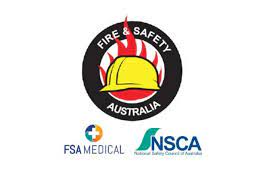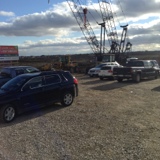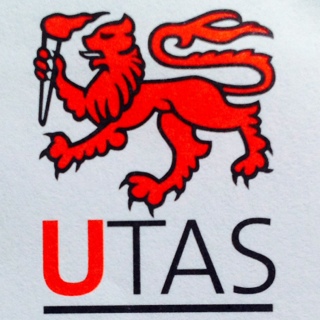Title Page
-
Site conducted
-
Conducted on
-
Prepared by
-
Work Scope
-
Confined Space Over Veiw
-
Location
-
ISO Number
PRIOR TO ENRY- SUPERVISOR TO CONFIRM 1. Entry into Confined space must be controlled via Permit issued Authorizer 2. All risk assessments and air gas monitoring must be completed prior to entry and continuous monitoring maintained where there is a potential to change atmosphere. 3. Only Confined Space trained personnel are to enter a Confined Space. 4. Trained and nominated standby person/sentry shall always be in place and shall NOT enter the confined space and carry UHF Radio 5. Safe emergency access and egress by means of stairs or scaffold shall be considered prior to any works being conducted in Confined Space. 6. Site Supervisor to be aware of Confined Space activities. 7. CSE rescue equipment to be available onsite. 8. Relevant personal to be contacted prior to first entry to assist with rescue plan development and area familiarization. 9. Allocate 4-6 workers to assist rescuer in the event of an emergency. Each space should be assessed by supervisor and relevant to determine whether or not the wearing of a harnesses or prior installation of a tripod is beneficial for rescue purposes. SITE EMERGENCY RESPONSE 1. Standby Person/Sentry to initiate Emergency. 2. Call “Emergency-Emergency-Emergency” on Radio Provide details to control room: a) Your name b) Exact location of emergency c) Nature of emergency (what has happened) d) How many people are affected/injured e) Best access point f) Any hazards that are present 3. Entry/Exit control shall be always maintained unless unsafe to do so. 4. Send an escort to flag down external emergency services 5. Relevant Personal will assess scene and request Further assistance to attend scene. 6. If safe and there is no change to atmospheric conditions, Rescuer can assist with First Aid treatment and retrieval of casualty via stretcher if required under normal CSE entry requirements. 7. Where it is not safe to enter due to atmospheric conditions personal in charge will initiate external response.
-
RELEVANT SUPERVISOR
-
RELEVANT PERSONAL
Confined Space Details<br>EXTERNAL EMERGENCY RESPONSE PROCEDURE<br>1. Notify Emergency Services – 000 and inform them of the nature of the emergency, status of the person (s), directions to the site.<br>Address: <br>2. Ensure spotters are in place to direct emergency services to the location.<br>3. Assist emergency services as required. <br>
-
Numbers Door
-
Entry type
- Stairwell
- Vertical Lower
- Vertical ladder
- Horizontal Crawl
- Horizontal Walk
-
Door Entry's
-
Potential Rescue Hazards
- Medical
- Fall from Height
- Hazardous Atmosphere
- Hazardous Chemicals
- Electrical
- Entrapment
- Fire
- Restricted movement
- Physiological "claustrophobia"
- Mechanical
-
Will entry and exit to the work area impact on any emergency rescue
Required Confined Space Requirements:
-
Rescue Equipment
- Trauma and Resus Kit
- Helmet
- CSE harness
- Rescuer harness
- Gloves
- Glasser's
- Gas detector
- Fall restrain system
- SRL
- Twin leg lanyard
- Ladder
- Tripod
- Winch
- Confined space stretcher
- Basket stretcher
- Slings
- Karabiners
- Pulleys
- Milan rescue kit
- Rope lowering system
- Crane
- EWP
-
Communication Requirements
- Radios
- verbal
- Wiesel
-
Possible High Points
-
Possible Anchor points
-
Access for use of EWP/Crane
-
Gas Detection Requirements
- Once off
- Continues GTA
-
Ventilation
- Natural
- Positive
- Negative
- Positive / Negative
-
Raspatory Protection Equipment
- P2 mask
- Half Face Respirator
- Full Face Respirator
- SCBA
- Air Line SCBA
- Positive pressure mask
-
Possible Person Required
-
Will rescue be complex and require external assistance
- Possible Assistance Required
- MFS Assistance Required
- SAAS Assistance Required
- SAPOL Assistance Required
- None Required
Rescue Break Down • Assess situation to establish if external assistance is required. • If Safe to do so e ntry space to apply medical treatment to the injured worker if required • If able to assist worker out if space for further medical assessment and possible treatment In the event of the person(s) requiring assistance from within the confined space the Spotter / rescuer shall consider the following: • Testing the atmosphere prior to entry of the confined space • "Coach" the casualty into self-rescue from the confined space • Execute the rescue from outside the confined space, i.e. with the use of an extraction pole • The rescuer to enter the confined space to perform the rescue once safe to do so and rescue plan has been established.
-
1
-
2
-
3
-
4
-
5
-
6
-
7
-
8
-
9
-
10
-
11
-
12
-
13
-
14
-
15
-
16
Rescue plan Review
-
Review of rescue plan required














